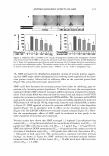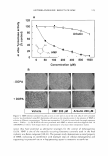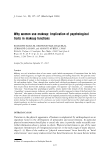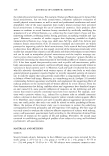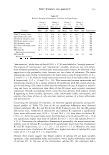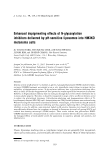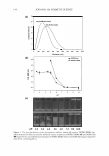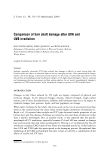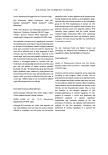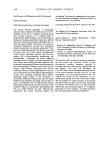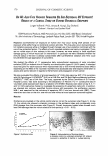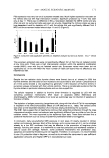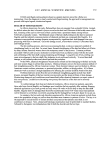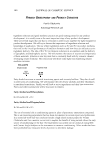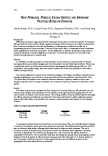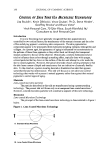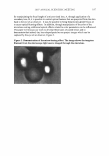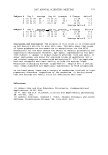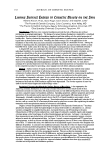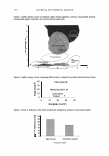128 JOURNAL OF COSMETIC SCIENCE the whole physical attractiveness. For example, Nielsen and Kernaleguen (4) showed that facial attractiveness, but not body attractiveness, influences subjective evaluation of overall physical attractiveness, as well as social and professional satisfaction and social desirability. One of the most important ways today's women increase their perceived facial attractiveness is through the use of commercial cosmetics. Such products allow women to conform to actual feminine beauty standards by artificially modifying the appearance of a set of facial features, e.g., enhancing the visual impact of eyes and lips, narrowing eyebrows, reddening cheeks, dyeing grey hairs, or masking wrinkles and "age spots." Moreover, a number of studies suggest that displaying youthful or slightly immature facial features (e.g., large eyes, small nose, full lips, small chin, delicate jaw) enhances female attractiveness (5 ,6). If cosmetics (standard and corrective) are widely portrayed as improving tools for facial attractiveness, little research has been published to objectivize their efficiency in this regard. A review of the literature reveals only a few studies that assumed that cosmetics can efficiently and objectively enhance attractiveness and can be used to manipulate physical attractiveness and the implicit messages cos- metics convey about ourselves (7-9). The "psychology of cosmetics" appears therefore as a new field concerning the characterization of the beneficial effects of cosmetic practices (10). It has been argued that personality traits such as public self-consciousness, public body-consciousness, social anxiety, and facets of body image are systematically related to variations in facial cosmetic use (11). Moreover, Cash and Cash (12) showed that women who felt relatively dissatisfied with various aspects of their own body or with their general physical appearance reported higher or recently expanded patterns of cosmetic use. It could be argued that such patterns could reflect a compensatory effort to correct or balance a flawed self-image. Moreover, in a stimulating article, Leveque (13) revealed a relationship between appearance and health, and emphasized the supporting effects of makeup products on the mental health of women affected by severe illnesses. From the clear demonstration that feeling confident about one's appearance has a beneficial impact on one's mood (14), some positive influences of cosmetics on the well-being and self- esteem that result in positive emotional states have been reported. For example, emo- tions with a positive valence (e.g., induced by a pleasant odor or colorful cosmetics) induce a decrease in heart rate, whereas negative valence stimuli induce opposite effects (15). Therefore, since cosmetics are used to modify physical appearance and attractive- ness, one could predict that such a use could be related to stable psychological factors. Hence, the purpose of the present study was to investigate in women the underlying correspondence between personality and self-experience with makeup. The first stage of our study aimed to evaluate the subjective affective experience of subjects with makeup, using a self-assessment questionnaire built according to the information obtained from interviews of women on the quality of life and makeup. Thereafter, the second stage consisted in establishing psychological profiles of our subjects by using well-validated psychometric self-questionnaires. MATERIALS AND METHODS SUBJECTS Seventy female subjects belonging to four different age groups were recruited for this study: group 1: 25-34 yr (n = 21) group 2: 35-44 yr (n = 14) group 3: 45-54 yr (n = 25) and group 4: 55-65 yr (n = 10). All subjects were customary cosmetics users.
WHY WOMEN USE MAKEUP 129 EVALUATION OF PERSONAL SUBJECTIVE EXPERIENCE WITH MAKEUP A self-assessment questionnaire was built during a qualitative survey from the interviews with women about their relationship with makeup. In our study, makeup is the appli- cation of facial cosmetics, including foundations, but also eye shadow, lipstick etc . .. The choice of products and mode of application were free for each subject. The instruc- tion given to the subjects was to apply makeup as they usually did, in order to analyze the most stable makeup patterns for each subject, and therefore the more representative. Three d1fferent age groups of women, all makeup products users, were recruited for this study and interviewed (the first group: 18-30 yr, n = 10 the second group: 30--40 yr, n == 10 and the third group 40 yr, n = 10). More than 560 sentences were first generated and classified into six different categories: (i) assertiveness level, (ii) protection, idealized naturalness, (iii) women multi-facets, (iv) aesthetic valuation, (v) seduction, (vi) makeup for oneself, and (vii) without makeup and habits. The number of sentences was then red.uced to 325 according to their independence, exhaustiveness, and pertinence. In a second step, a questionnaire was used during a consumer study done with 5 7 women 24- to 58-years-old, in order to select more comprehensive, independent, and relevant sentences. The definitive form of the questionnaire was set up, with the remaining 140 sentences proposed with a five-point Likert response scale ranging from O to 4 (O meaning strongly disagreeing and 4 strongly agreeing). PSYCHOMETRIC ANALYSES Psychological characterization of the subjects was done using four well-established and validated psychometric self-questionnaires: The State-Trait Anxiety Inventory (STAI-T) (16) consists of 20 items designed to assess trait anxiety and instructs subjects to report how they "generally" feel by rating themselves on a four-point frequency scale ranging from 1 (almost never) to 4 (almost always). The Coopersmith Self-Esteem Inventory (SEI: adult version) (17) is designed to measure and evaluate one's self-opinion regarding social, academic, family, and personal areas of experience. The inventory contains a total of 58 items answered "like me" or "unlike me." Scoring yields separate scores for the four subscales: general self (26 items), social self-peers (eight items), academic (eight items), and home (8 items). The scale allows the calculation of a global self-esteem score that can be used as an indicator of self-esteem and valuation of the self. The Rathus Assertiveness Schedule (RAS) (18) is used to measure assertiveness level. The scale includes 30 items that are scored on a six-point Likert-type scale, ranging from -3 (least like me) to + 3 (most like me). The Eysenck Personality Inventory (BPI, B form) (19) was designed to measure two pervasive, independent dimensions of personality, neuroticism-stability (24-items) and extroversion-introversion (24 items). The "extroversion" dimension rep- resents the tendency to be positively and actively engaged with one's environment (interpersonal interaction and sociability), while the neuroticism dimension characterizes high levels of negative affect such as depression and anxiety. The scale allows the calculation of an "extroversion score" (E) and a "neuroticism score" (N). STATISTICS Sentences from the makeup questionnaire were compared by the chi-square statistical method. The research into the psychological profiles of the volunteers was carried out by
Purchased for the exclusive use of nofirst nolast (unknown) From: SCC Media Library & Resource Center (library.scconline.org)

















